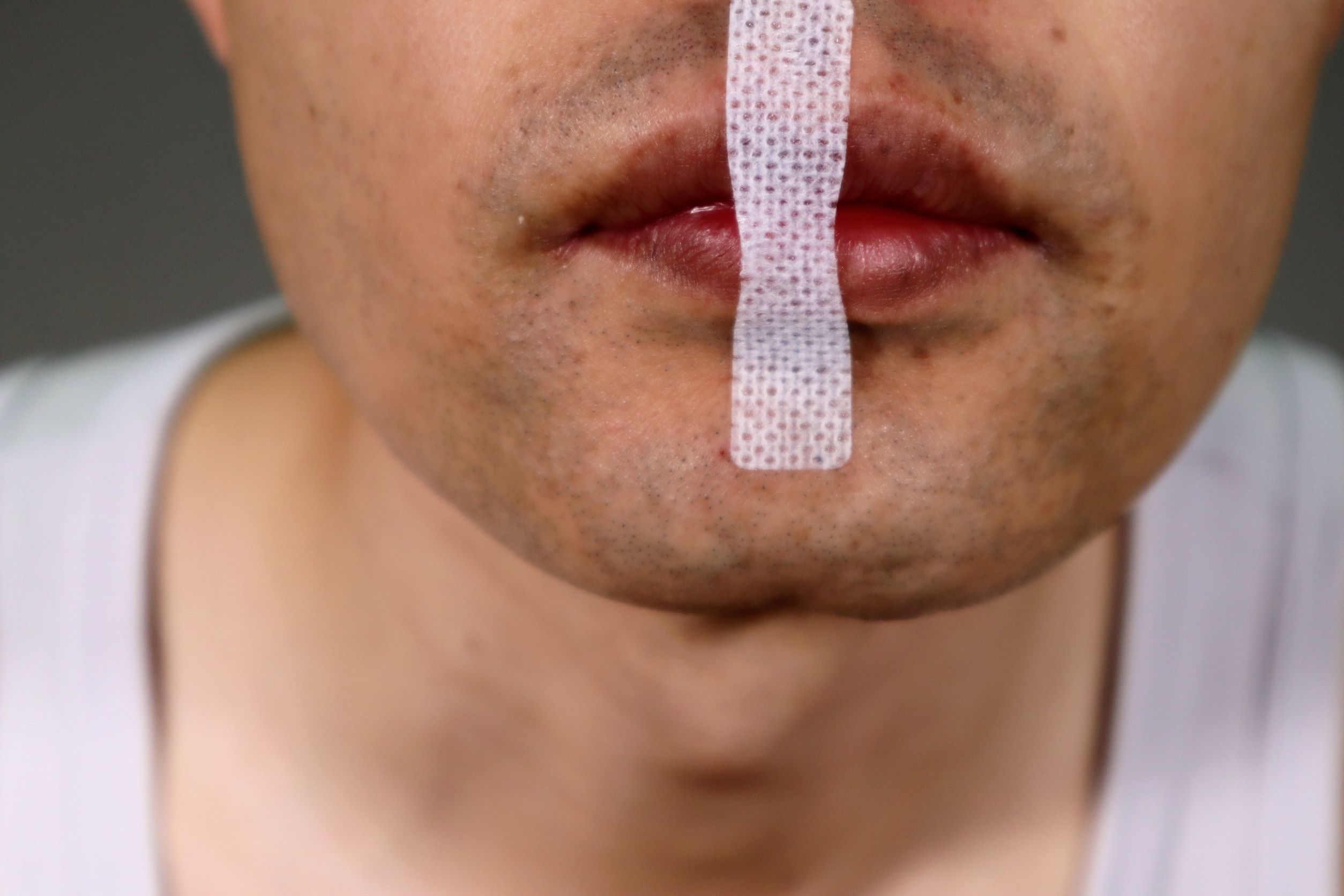
It’s easy to tell when you get good sleep. You feel rested, alert and ready to tackle the day.
But good sleep quality isn’t always easy to achieve. For some people, they breathe through their mouth, which might lead to trouble sleeping.
Mouth breathing can be a nuisance. It can cause a dry or scratchy throat, bad breath and snoring. Some people who have trouble breathing through their noses while sleeping turn to a practice called mouth taping.
People tape their mouths shut while sleeping in order to force themselves to breathe through their noses. And while over-the-counter mouth tape for sleep product is sold, it begs the question – is it a safe and effective practice?
Is mouth tape dangerous?
Mouth taping not only doesn’t help you to breathe through your nose, it’s also highly dangerous. It can cause obstructed breathing and create other more serious sleep disorders like obstructive sleep apnea and sleep disruption.
“You’re supposed to breathe in and out through your nose, but mouth taping is not safe at all,” said Kaninika Verma, MD, clinical sleep director at OSF HealthCare. “This is nothing a physician would ever recommend to a patient.”
Why people use mouth tape
It’s not uncommon to breathe through your mouth when you’re sick or stuffed up. You don’t need to resort to taping your mouth closed. Taking medications can help unclog that.
People often use mouth tape for snoring, as well. According to Johns Hopkins Medicine, about 45% of adults snore occasionally. For those people who have trouble sleeping because of snoring, there may be something more going on. But mouth tape isn’t a solution for reducing snores.
If mouth breathing is a chronic problem you’re experiencing, talk to your doctor instead of turning to this unsafe practice. Your doctor can help you find safe and effective solutions for how to sleep with your mouth closed without tape.
Finding the reason for mouth breathing
According to Dr. Verma, mouth breathing is a symptom of a bigger issue. It’s more important to figure out why you’re sleeping with your mouth open and get to the bottom of that issue than it is to force yourself into nasal breathing with tape. Some things that may be making you breathe through your mouth include:
- Snoring
- Natural mouth breather
- Blocked nasal passages
- Enlarged tonsils
- Enlarged adenoids
“If you’re having issues with your sleep, waking up multiple times throughout the night, having issues with falling asleep or staying asleep or with snoring – those are the questions that need to be looked at to figure out what is really going on,” Dr. Verma said.
Solving sleep disruptions
Getting good sleep is essential to our health and overall well-being. If you’re not getting good sleep, mouth tape isn’t the answer.
Talking to your primary care provider is the first step. If they find there’s an underlying sleep problem, you may need to see a sleep specialist. These specific types of providers can help determine what is interfering with you getting restful sleep, and how to correct it.
If you’re afraid of seeing a sleep specialist for fear of having to go through a sleep test, don’t panic.
“There’s so much more to sleep medicine than just sleep tests. It’s actually having a conversation as to what is going on,” Dr. Verma said.
A sleep specialist can evaluate your symptoms and help determine if you’re dealing with a bigger problem, such as:
- Trouble quieting your mind or anxiety
- Snoring
- Insomnia
- Sleep apnea
- Allergies
- Nasal congestion
Where you get your health expertise
Dr. Verma warned against getting your health and medical advice online and on social media platforms. These “solutions” are often just fads – people doing things for entertainment – not good medical advice from a professional.
“Be very cautious and very careful what you believe,” Dr. Verma said.
At the end of the day, it’s best to address any and all health issues with your provider, someone who is trained to address your medical concerns and understands you and your health history.
“If you have an issue – any health care issue – please reach out to your primary care provider.”
Last Updated: October 24, 2022






